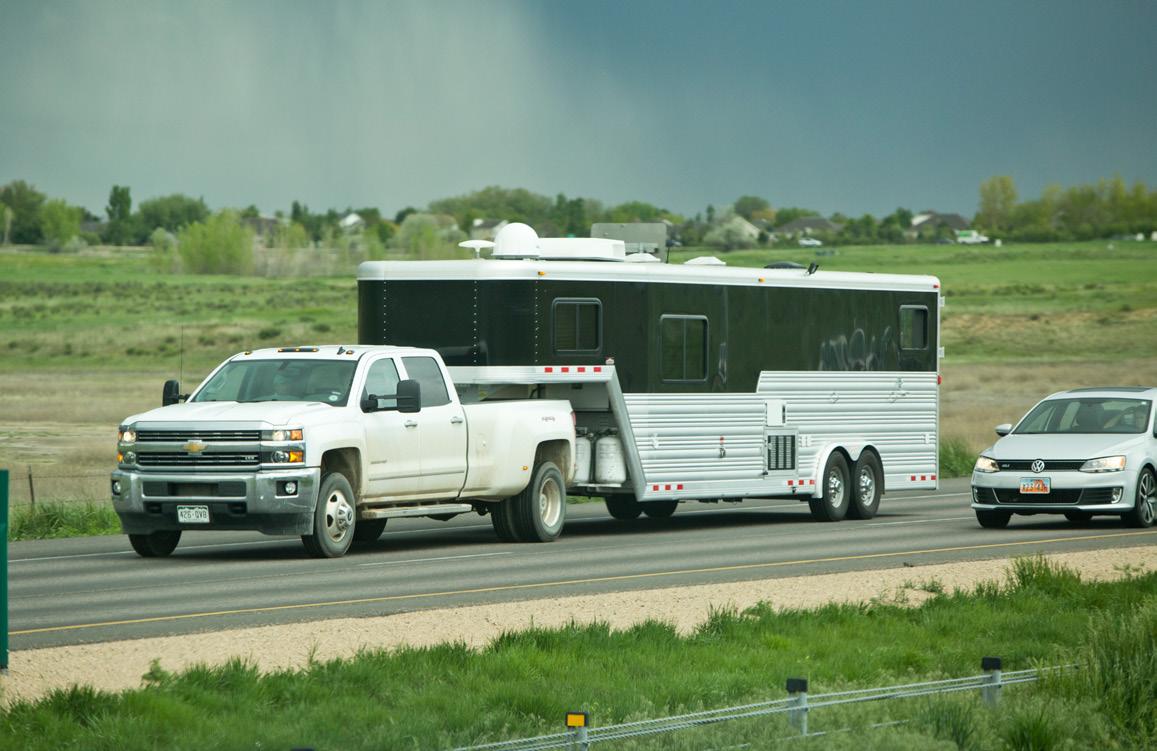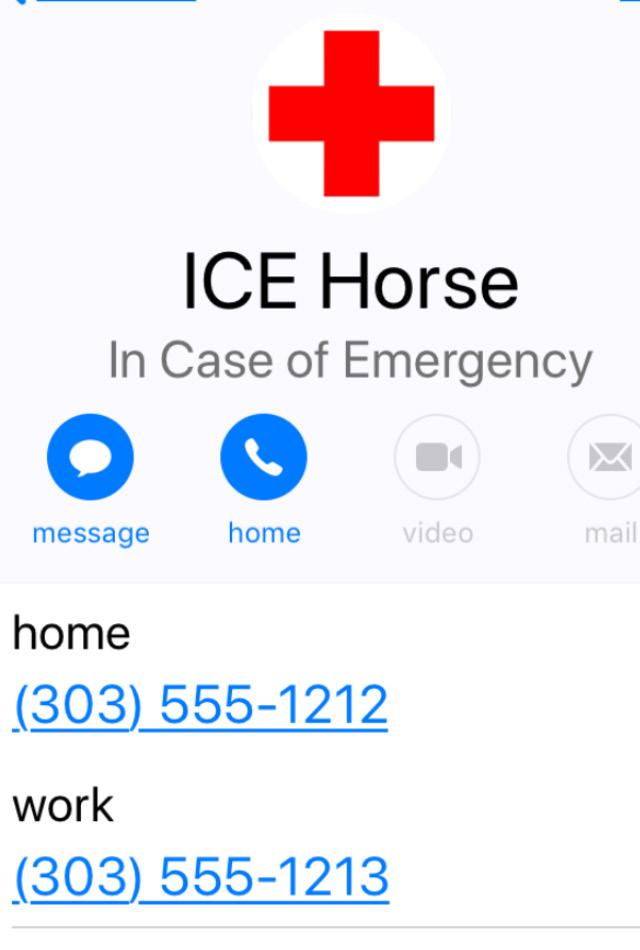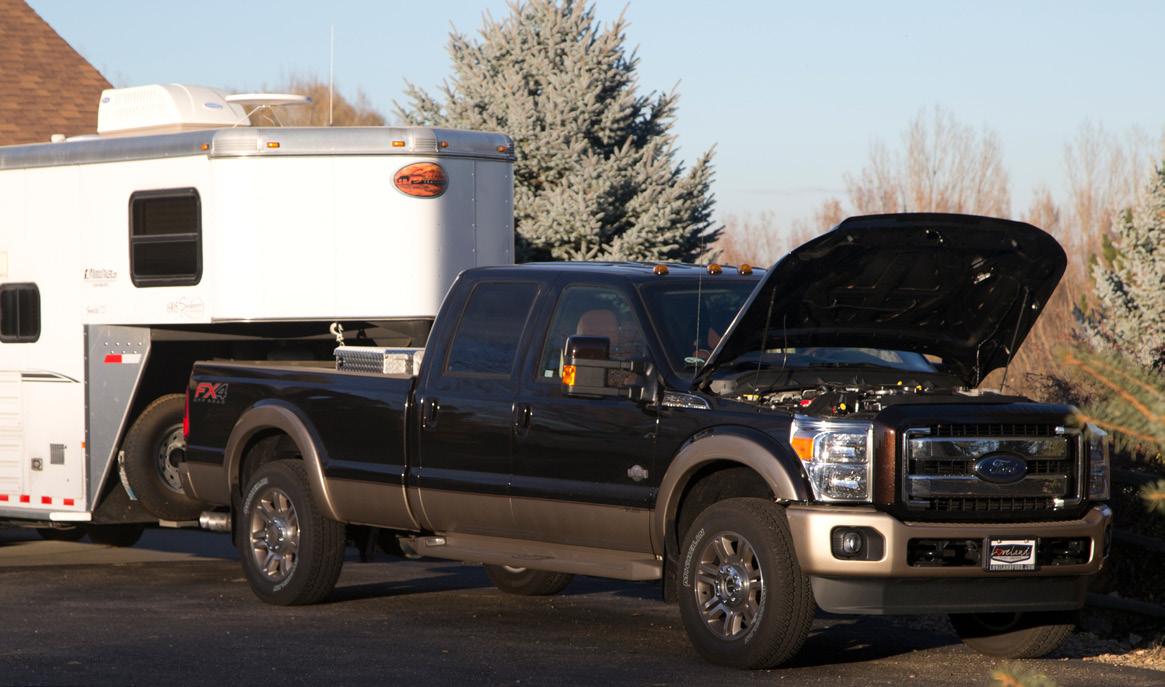
4 minute read
Skill Set
Trailering emergencies, such as a traffic accident, can happen to anybody at any time. Whatever the emergency, you can greatly influence the outcome by being prepared. PHOTO BY HEIDI MELOCCO
When it comes to trailering your horse, keep in mind Zig Ziglar’s sage advice: “Expect the best. Prepare for the worst.”
Trailering emergencies can happen to anybody at any time. Whatever the emergency, you can greatly influence the outcome by being prepared every time you load your horse in your trailer, whether for a trip across town or across the country.

Here, I’ll give you seven types of emergency situations you might encounter while trailering your horse. For each situation, I’ll tell you how to prepare so you can be ready when it happens. By taking the precautions recommended here, you’ll be much more confident in your ability to handle each type of situation until help arrives.
Emergency#1: You’re involved in a traffic accident. How to prepare: An accident can happen at any time. Lessen this risk by being the best and most responsible driver you can be. Enroll in a driving course. Enhance your control by properly setting up your rig, making sure your tow vehicle is rated to tow the weight of your loaded trailer, and using the proper hitch. Carry spare halters and lead ropes in your vehicle or trailer so you’ll be prepared if— heaven forbid—your horse gets loose on the highway. Emergency #2: You and/or your passengers become injured. How to prepare: Store a human first-aid kit in your tow vehicle to treat minor injuries. Take first-aid and >>
cardiopulmonary resuscitation (CPR) courses so, if you’re uninjured, you’ll be able to administer first-aid until help arrives. Emergency #3: You become incapacitated. How to prepare: In extreme situations, you may become incapacitated. Help first responders handle your horse by posting a visible notice in your trailer listing names and numbers to call for help. Also, enter emergency numbers into your cellphone’s contacts under the initials “ICE horse.” (“ICE” stands for “In Case of Emergency.”) Emergency #4: Your horse becomes injured. How to prepare: Even if your horse is a seasoned traveler, he can still hurt himself in the trailer or while you’re away from home. Wrap your horse’s legs, and consider other protective equine gear during travel to reduce the possibility of injury. Make sure your trailer is safe. Check for any sharp edges or protrusions inside that could cause injury. Use only removable interior dividers, bars, and center posts, in case you need to get your horse out of a trapped situation. Carry a well-stocked equine first-aid kit so you can tend to his injuries. Ask your veterinarian to teach you emergency-treatment techniques. Emergency #5: You get a flat tire. How to prepare: Have a spare tire that’s in good condition so you’ll be able to get back on the road quickly in the event you get a flat tire. In fact, carry at least one spare tire for both your tow vehicle and trailer. Then know how to change flats on both. (For more information on how to prevent a trailer-tire blowout and what to do in the event of a flat tire, see “Blowout!” this issue. For how to change a trailer tire, click here.) In case you become incapacitated, enter emergency numbers into your cellphone’s contacts under the initials “ICE horse.”

Lessen the chance of a roadside vehicle breakdown with a pre-trip check of fluid levels and tire condition, and by following a prescribed maintenance schedule. PHOTO BY HEIDI MELOCCO

Emergency #6: Your tow vehicle breaks down. How to prepare: Lessen the chance of a roadside vehicle breakdown with a pre-trip check of fluid levels and tire condition, and by following a prescribed maintenance schedule.
If you get stuck in a long traffic jam, especially in hot weather, your horse could become stressed and agitated, and is even at risk for a heat stroke. PHOTO BY HEIDI MELOCCO

Emergency #7: You’re stuck in a long traffic jam. How to prepare: If you get stuck in a long traffic jam, especially in hot weather, your horse could become stressed and agitated, and is even at risk for a heat stroke. Check reliable map apps to keep track of problem spots along your route and for suggested alternate routes. Keep 10 to 20 gallons of water on board at all times to help keep your horse cool. Offer him water to drink and, when it’s safe, rinse him off. If you need to, turn around, and head back home. —Neva Kittrell Scheve (equispirit.com)










